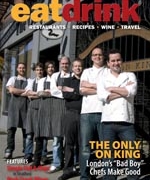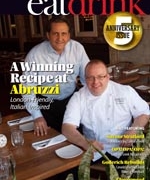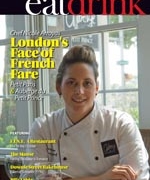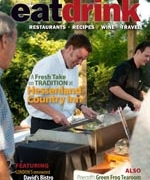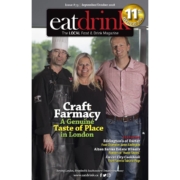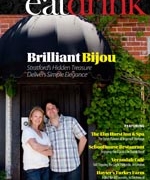Eating and Cooking as Storytelling
In the world of publishing, Jason Epstein, who sat as editorial director of Random House for many years, is legendary for his revolutionary ideas in the book business. But he is also full of pithy advice for anyone who dabbles in the kitchen, such as, “Let your taste be your guide” and “Recipes should be more like stories than like maps.” Surrounded by books for most of his life, it seemed appropriate to put these ideas into print by writing a book of recipes and the stories about why they are important to him. More accurately, Eating: A Memoir, is a collection of recipes told as stories, since there are very few measurements in sight and nary a grocery list of ingredients to be found. The cooking instructions offered by Epstein follow more of a narrative structure on how to make his favourite dishes like Lobster Bisque and Egg Foo Yung. These are not the type of recipes attached to your fridge with a magnet ready to be stained with oil or dusted with flour. These are recipes that Epstein hopes you read over a few times, try your hand at, and gradually integrate into your own kitchen storytelling. These recipes teach you that knowing your ingredients is more important than measuring them, and telling stories with your cooking is better than following directions.
Epstein attaches food to memories of his childhood and he has fine-tuned these memories into nostalgic recipes for Prime Beef Hamburgers, Homemade Potato Chips, and Chicken Pot Pie. The recipes in the book are often specific to a time and place for Epstein, but by sharing them with us they become timeless. With some cooking jobs in his past, some of the recipes are learned from his restaurant experiences, others are borrowed from the cookbooks of famous chefs he has published, but they are all perfected by the tried and true methods of a home cook getting creative in the kitchen. Epstein believes trial and error is a better tactic than a precise doling out of ingredients and a personal touch makes a recipe better than a formulaic script.
He may not be a trained chef, but his advice is no less professional and his dialogue with the reader is honest, such as his warning for preparing Penne in Tomato Sauce: “If you turn your back for a minute and the jalapeno blackens or the garlic becomes acrid, toss it out and start over.” And who of us hasn’t used the same line – “The dish is even better the second day, as leftovers” – as he mentions about his recipe for Bolognese Sauce. He is also a thoughtful writer, reminding us on more than one occasion to wash our hands immediately after cutting jalapeno peppers, because any inadvertent touching of the eyes causes searing pain (maybe he learned this first hand, as I know I have. One of the worst things that ever happened to me involved a jalapeno pepper, when I learned it is wise to keep them away from your eyes).
There is more than a whole page dedicated to techniques for opening clams for Clams Casino, but Epstein consoles us by saying, “Don’t be discouraged if you don’t succeed the first or even the fifth time.” Overall, the recipes are heavy on seafood, given Epstein’s proximity to fresh bounty from the east coast waters surrounding Long Island. Out of the forty-four recipes, there are twenty-one centring around seafood, six involving lobster, and we are even given step by step instructions for killing the crustacean before eating it. Epstein assuages us simply by writing, “There is no reason to be squeamish about this” and seafood lovers everywhere will agree the sacrifice is worth the taste.
Another compelling aspect of the book is that the recipes start out very homey, but are mixed with more elegant meals. Most of his forays into restaurants are in his stomping ground of New York and stories are not hard to come by for Epstein from a lifetime in the publishing industry: dining on Shad Roe with Sorrel Sauce with Jackie Onassis at the best French restaurant in New York; cooking Lobster Fra Diavolo for Norman Mailer at his home in Massachusetts; being the first to approach Alice Waters in San Francisco about publishing her influential Chez Panisse Menu Cookbook; enjoying an unforgettable meal with Gore Vidal in France with a salmon dish “so fresh that its eyes seemed to blink when it was brought to the table.” He also delves into his more exotic travels by extolling the virtues of Icelandic lamb and Omani goat. All part of a publisher’s job. But above all else, aside from the recipes and kitchen tips, Epstein illustrates that the events of a life are indelibly connected to food, whether it’s the first meal he prepared after 9/11 or how he has subconsciously, although not surprisingly, designed his kitchen in the same style as his grandmother’s.

